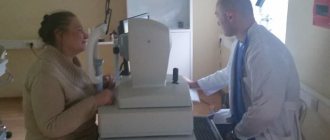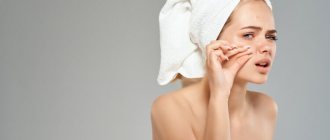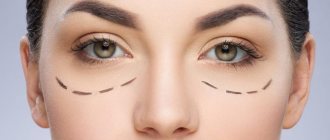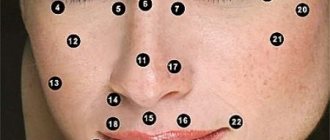A smile is a person’s calling card, especially if it is framed by cute dimples on the cheeks. There is an opinion that such a smile evokes greater admiration, trust, and can even engender love at first sight. It is also believed that those with dimples are the lucky ones who were kissed at birth by Cupid, the god of love.
Naturally, people could not help but notice this natural feature of the face and, of course, over the centuries, their own folk version has formed about where they come from and what meaning they carry to their owner.
What is dimpleectomy
Dimple-ectomy is a minimally invasive plastic surgery that creates symmetrical hollows on the cheeks. The operation can be performed by anyone with any cheek shape and fullness. The dimples can be made deep, shallow, round, or elongated. The procedure is considered easy, is well tolerated and has a short recovery period. Why do people want dimples? To answer this question, let's look at how they are formed and why people like them.
Dimples
Cheek dimples are a genetic defect in which a separate bundle of the zygomaticus major muscle (lat. m. zygomaticus major) is separated and attached to the dermis, and thus, when the muscle is tense, a depression is formed, that is, the muscle bundle pulls part of the skin of the cheek along with it. This is most noticeable when smiling and on chubby cheeks, since the fat layer is more pronounced there.
This structural feature of the facial muscles does not affect their work in any way, but creates a cute, childish facial expression that is attractive. This anomaly is transmitted genetically and has a dominant nature, that is, if your parents have dimples, you will have them.
Society has a positive attitude towards those with dimples. They are called "angel's kiss" or "sign of happiness." It is believed that those with this defect are more successful and happy people. Dimples on the cheeks give the face a more youthful appearance. They can be of any shape, asymmetrical and even only on one cheek. With age, dimples may disappear, this is due to thinning of the fat layer and stretching of the muscles.
Those who were not born with dimples can have a simple dimpleectomy surgery.
Freckles
Freckles are the result of a mutation in skin cells known as melanocytes. Melanocytes are located in the epidermis layer of the skin and produce a pigment known as melanin. Melanin helps protect the skin from harmful ultraviolet rays from the sun, giving it a brown tint. A mutation in melanocytes can cause them to accumulate and produce increased amounts of melanin. This results in the formation of brown or reddish patches on the skin due to uneven distribution of melanin.
Freckles develop as a result of two main factors: genetic inheritance and exposure to ultraviolet radiation. People with fair skin and blond or red hair are more likely to develop freckles. Freckles tend to appear most often on the face (cheeks and nose), arms and shoulders.
Progress of the procedure
The plastic surgeon examines the face and makes marks with a marker. The operation is performed under local anesthesia (lidocaine, ultracaine or novocaine). The operation is performed on the mucous side of the cheek, so there will be no visible scars on the skin. The surgeon disinfects and cuts the mucous surface of the cheek, partially removes the fatty tissue and excises a small piece of muscle, fixes the muscle with self-absorbable suture material, creating the effect of a dimple on the cheek, then sutures the incision and sends the patient home with recommendations for wound care. The operation lasts on average 30-40 minutes.
Rehabilitation
The rehabilitation period lasts from 2 weeks to 1 month.
After surgery, you may experience some discomfort and pain during the first week. To relieve this condition, you can take painkillers, such as paracetamol or ibuprofen.
You need to rinse your mouth with antiseptic solutions and/or herbal infusions of chamomile, sage, oak bark throughout the day and always after eating.
You need to brush your teeth carefully so as not to injure the wound surface. Preference should be given to soft, warm, grated food. For the first 2-3 days, you can eat food from baby jars or make yourself liquid porridge.
Your doctor may prescribe antibiotics to prevent the wound from becoming infected.
When should you see a doctor?
All suture material used in the operation is self-absorbing, so there is no need to remove the sutures. You will need to visit your doctor for follow-up 3 days, 1 week and 3 months after surgery.
Contraindications
There are a number of contraindications for the procedure:
- diseases of the heart and blood vessels that are in the acute phase (complications may occur);
- diseases and tumors caused by viruses;
- pregnancy and lactation;
- chronic diseases that are in the acute stage (provoking severe complications);
- pathologies of the circulatory system leading to deterioration of coagulation (for example, hemophilia - provokes large blood loss during surgery);
- general ailments;
- oncology (the presence of benign tumors is also a reason for refusing surgery);
- diseases of the central nervous system;
- mental disorders;
- epilepsy;
- diabetes mellitus (decompensated and in the stage of decompensation can provoke ketoacidotic coma; compensated diabetes mellitus is assessed as a relative contraindication, so some surgeons will be able to perform the operation);
- allergic reactions to medications (causes of anaphylactic shock and death during invasion);
- long history of smoking (leads to disruption of natural tissue regeneration, the rehabilitation period is delayed by 2-3 weeks);
- menstruation (may increase bleeding during surgery);
- severe obesity of 3-4 degrees;
- elderly age;
- children under 18 years of age.
Possible complications
— The risk of complications is minimal, especially if the operation was performed by a qualified plastic surgeon.
— In the first days after surgery, slight swelling and hematomas may be observed, which will go away on their own.
— The pain can be relieved with painkillers.
— If wounds are not properly cared for, infection by pathogenic microorganisms may occur. This is treated with local and systemic antibacterial drugs.
- Asymmetry of the depressions or their different depths.
— Instead of a hole, a wrinkle has formed.
— An unnatural depression spoils the face.
— Delayed complication is associated with age-related sagging of the skin and the possibility of folds forming at the surgical site.
Note!
Dimpleectomy is an irreversible operation. If you do it, you won’t be able to make your cheeks smooth right away. The surgeon can only reduce their depth and make them less noticeable.
Preparing for surgery
The desired result depends not only on the professionalism of the surgeon, the equipment of the clinic with special medical equipment, but also on the correct preparation and psychological attitude of the patient.
The following rules must be followed:
- refrain from taking medications (for example, drugs containing acetylsalicylic acid, anticoagulants, hormones, vitamins E and C affect the nature of blood flow). Do not take them 2 weeks before surgery. Take medications prescribed by your doctor to correct blood pressure, cholesterol and sugar;
- quit nicotine 14 days before the procedure;
- stop drinking alcoholic beverages a week before the dimpleectomy (they promote bleeding);
- cook food with little salt;
- exclude spicy foods and caffeine (this prevents swelling after surgery);
- reduce the consumption of meat, fresh vegetables and fruits, as well as vitamins;
- stop visiting the solarium;
- start a proper rest.
The evening before the dimpleectomy, have a light dinner before 18:00. After midnight, refrain from constant drinking. Cleanse the body of waste and toxins with an enema. Take mild sedatives. Have a good rest and sleep before the procedure.
On the day of surgery, stop eating and drinking. In the morning, take a hot shower, wash your hair and apply an antiseptic to the area of the procedure. Wear the most comfortable clothes, wash off your manicure and makeup, remove jewelry and discard contact lenses.
It is worth thinking in advance about the method of returning home. Ask loved ones for help for a while, as some drugs reduce concentration and the speed of metabolic reactions. Before the operation, it is important to discuss with the surgeon where the dimples will be located, what their size and depth are.
Don’t miss the most popular article in the section: Vera Alentova after plastic surgery - the latest photos, what operations were performed, how the star has changed.
How to make dimples on your cheeks without surgery
Cheek dimples can be created without surgery using cosmetics. To do this, you need to use concealers and correctors to darken the middle and lighten the contour of the supposed depression. The effect of the presence of dimples on the cheeks will be visually created.
You can get piercings on your cheeks; dimples will visually appear at the piercing sites, and when you remove the earring, small indentations will remain on your cheeks.
Photos before and after
Tags: plastic surgery
Market Analytics
- Global cosmetics market 2022: an unprecedented test for the global cosmetics industry
- Top 10 Cosmetic Research and Development of 2022
- 2020 in the beauty industry – innovation without borders
Convenient search for beauty salons on our website
Beauty salons in Moscow Beauty salons in St. Petersburg Beauty salons in Ekaterinburg Beauty salons in Novosibirsk
Latest blog posts on our website
- Naturecream / Properties of the “Sunny” oil itself
- Naturecream / “Sugar” wrinkles - or what glycation can do
- Naturecream / Esterified oils
- Naturecream / Arnica - the magical plant of alchemists
- Naturecream / Tremella Extract - Snow Mushroom Detox for Skin
- Prostye-sovety / How to visually enlarge your lips with makeup
- Naturecream / Apricot kernel oil for face
- Naturecream / MATRIXYL3000 - the best skin elasticity stimulator
- Naturecream / SPF in Natural Oils
- Naturecream / Geranium (Pelargonium) oil for skin health and beauty
Latest forum topics on our website
- Natalya / How to properly make a gelatin mask?
- Mrs._Smith / Badly sunburned! What to do?((
- Ice / Is it necessary to combine fitness classes with a diet?
- Antonova / What can be used for hair loss?
- Radio operatorKat / Who was on a protein diet?
Reviews about
the dimple procedure: how to do it, dimpleectomy surgery [Leave a review]
Leave your feedback about this procedure (it will appear on this page after moderation)
In this form, describe only
your personal
experience of undergoing the procedure.
In order to leave a comment regarding the content of the article, use another form - in the “comments” block at the bottom of the page.
Other articles in this section
| Hyaluronic acid in the lips Hyaluronic acid is injected into the lips in almost every beauty salon or cosmetology clinic - this is one of the most popular procedures among women of different age categories. The introduction of hyaluronic acid into the lips allows you to maintain youth and moisture, as well as add volume to the lips and correct their shape. |
| Circular facelift Every woman always strives to remain beautiful and young. Unfortunately, over time, age-related changes become more and more noticeable - wrinkles appear, the oval of the face becomes blurred, and the skin becomes flabby. All these factors negatively affect your appearance. But there is a way out - a circular facelift (another name for the procedure is rhytidectomy). With its help, you can achieve amazing results - many women who have undergone surgery look 15-20 years younger. The effect of the operation lasts for a long time. |
| Ear plastic surgery (otoplasty) Ear plastic surgery (otoplasty) or ear correction is an aesthetic procedure that changes the size, position or proportions of the ear. The result of the correction depends on the changes you want to make to your appearance. In general, plastic surgery improves self-confidence, especially in children and adolescents. With the help of otoplasty, you can press your ears back to your head if they are protruding; adjust the level if one ear is higher than the other; make the ears symmetrical, if one ear is larger or smaller than the other, and also reduce/enlarge both ears. |
| Plasmolifting Plasmolifting (PRP, Plateletrichplasma) is an injection method of subcutaneous administration of platelet-rich plasma from the patient’s own blood, leading to the activation of regenerative processes in the skin. |
| Removal of Bisha's lumps Removal of Bisha's lumps is a very popular plastic surgery among young girls who want to get chiseled cheekbones and sunken cheeks, like some Hollywood stars. This operation has supporters and opponents, so let's figure out whether it is worth doing a bishectomy, what contraindications and indications exist, how Bish's lumps are removed and what complications may arise after the operation. |
| Forehead surgery The forehead is one of the characteristic features of a person’s face, by which one can determine his gender. In fact, the foreheads of men and women differ in many ways, but often people do not notice this difference. The ideal female forehead should be smooth and even. |
| Hair Transplant Alopecia, hair loss or baldness, is a common problem that affects both women and men. Its manifestation can be triggered by stress, illness, certain medications and heredity. While some factors are temporary, many lead to permanent hair loss, which can affect a person's self-confidence. Hair transplant is intended to help people suffering from baldness and hair thinning. |
| Mesothreads for face lifting Mesothreads for face lifting are one of the modern non-surgical anti-aging techniques that help when conventional cosmetics and popular folk methods are no longer enough to provide the skin with a blooming appearance. Mesothreads can be supplied by either a professional cosmetologist or a plastic surgeon. We will tell you in more detail what mesothreads are, their pros and cons, who are shown 3D mesothreads, how they work and how long the effect lasts. |
| Lip augmentation and correction (cheiloplasty) Full, plump lips are often considered a sign of good health, youth and beauty. If you were born with thin lips, or they are shrinking as a result of the natural aging process, there are many ways to enhance them. Plastic surgery using natural or synthetic fillers will help you look the way you want for several months. |
| Facial skin tightening (rhytidectomy) Facial skin tightening is a comprehensive approach to getting rid of wrinkles and sagging skin caused by aging. Surgeries vary in the degree of intervention, ranging from minimal, so-called “lunch-time lifting”, to longer and more complex procedures. |
Recovery after
Recovery after a dimpleectomy will take from 2-3 weeks to 1 month. The patient will experience swelling for some time. There will be pain, which can be relieved with painkillers. After 2-3 days, moderate pain will remain, noticeably increasing in the operated area when moving or touching it.
Attacks of nausea are possible. Their appearance depends on the duration of local and general anesthesia. Side effects when taking analgesics are minimal, but sometimes people experience them. The face after surgery will be susceptible to swelling. The peak occurs on days 2-3, after which a decline is observed. After 8 days, the skin smooths out and tightens tighter than usual.
After 14 days, only small swelling areas are visible. To speed up regenerative processes after surgery, sleep on thick pillows for 6-7 days. This will help reduce swelling. Ice and cold water also help. Surgeons recommend cooling the intervention area on the 1st day of rehabilitation. Herbal medicines, ointments and physiotherapy may be prescribed.
Important physiotherapeutic procedures are:
- microcurrents (exposure to the wound with weak electrical impulses is necessary to restore the functioning of skin receptors and improve blood circulation; they restore the previous innervation);
- phonophoresis (medicine is applied to the skin, then ultrasound treatment of the damaged area is carried out; the procedure is painless, quickly relieves swelling and bruises);
- darsonval (stimulates good blood movement through the vessels, quickly restores skin sensitivity, relieves swelling);
- ultrasound (acts on capillary walls, improves blood circulation, relieves swelling);
- laser treatment (improves the functioning of skin cells, accelerates the regeneration of soft tissues, prevents the appearance of scars).
The most common ointments for scars:
- Kelofibrase (spread a thick layer of the product on the damaged area 2-4 times a day, average cost 1,600 rubles);
- Zeraderm ultra (apply 3 times a day, product cost about 2100 rubles);
- ScarGuard MD (use 2 times a day for 2-3 months, the drug is absorbed in a few seconds, is felt on the skin for about 20 minutes, price - about 6100 rubles);
- Fermenkol (apply on a napkin or handkerchief and apply to the affected area, price varies from 600 to 1000 rubles);
- Contractubex (apply to dimples 3 times a day, cost about 500-900 rubles);
- Clearvin (smear the wound 4 times a day, cost about 200 rubles);
- Dermatix (apply a thin layer, do not rub in, apply 2 times a day, price – from 1300 rubles);
- Solcoseryl (smear the wound 3 times a day, cost 350-450 rubles);
- Keratan (apply 3-4 times a day, cost about 900 rubles);
- Ichthyol ointment (use the medicine 2 times a day, you can buy it for 150 rubles);
- Madecassol (apply 3 times a day, cost ranges from 150 to 800 rubles).
Edema can be treated with diuretic folk remedies. For this purpose, juices, decoctions, herbal teas and infusions are used.
These are the recipes:
- take 2 cucumbers, 2 carrots and 0.5 lemon, squeeze the juice out of the products to form 300 ml of each, mix all the ingredients and pour a small amount of clean water, drink 3 times a day;
- stock up on a couple of peppermint branches, pour hot water over them, let the product brew in a dark place until it cools down, drink 2 times a day in small sips;
- chop parsley, 1 tbsp. raw materials, pour 0.5 liters of boiling water, leave the broth for half a day, strain through a gauze bandage, take 1 tbsp. 3 times a day;
- 1 tbsp. pour boiling water over corn silk and strain after 10 minutes, drink the drink 3 times a day;
- 1 tbsp. hawthorn, pour 1 liter of hot water, leave to infuse for 2 minutes, drink 1/3 cup 3 times a day.
A noticeable mark after the procedure for the formation of dimples on the cheeks is bruising. This is considered normal, since a small amount of blood accumulates under the epithelium. Bruises are observed for 2-3 weeks, after initial healing of the wounds they disappear. If the hematoma lasts for more than 30 days, then this is considered a complication.
The number of bruises is influenced by the doctor’s professionalism and the patient’s skin type. On day 1 of rehabilitation, take aspirin and other medications with acetylsalicylic acid to avoid thinning the blood and increasing the size of bruises. You can hide the marks of a dimplectomy with cosmetics.
For up to 1 week, you should eat only soft and easily chewable foods. Before breakfast, lunch and dinner, treat the oral cavity with an antiseptic to avoid the penetration of pathogenic microorganisms into the wound. In the morning, brush your teeth with care, trying not to touch the damaged areas of your cheeks.
You can take a shower after surgery after 4-6 days. After 2.5 weeks, you can take a hot bath. For 30 days, cancel trips to the sauna and bathhouse. Avoid exposing the damaged area to sunlight; it can cause pigmentation, which will make the seams more noticeable.
Don't miss the most popular article in the section: How and why ribs are removed - effectiveness, photos before and after surgery.











